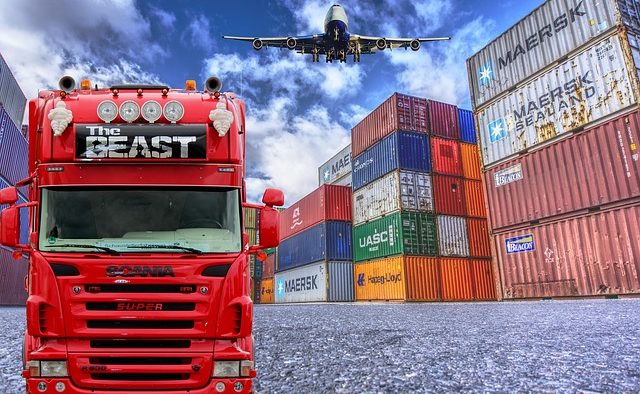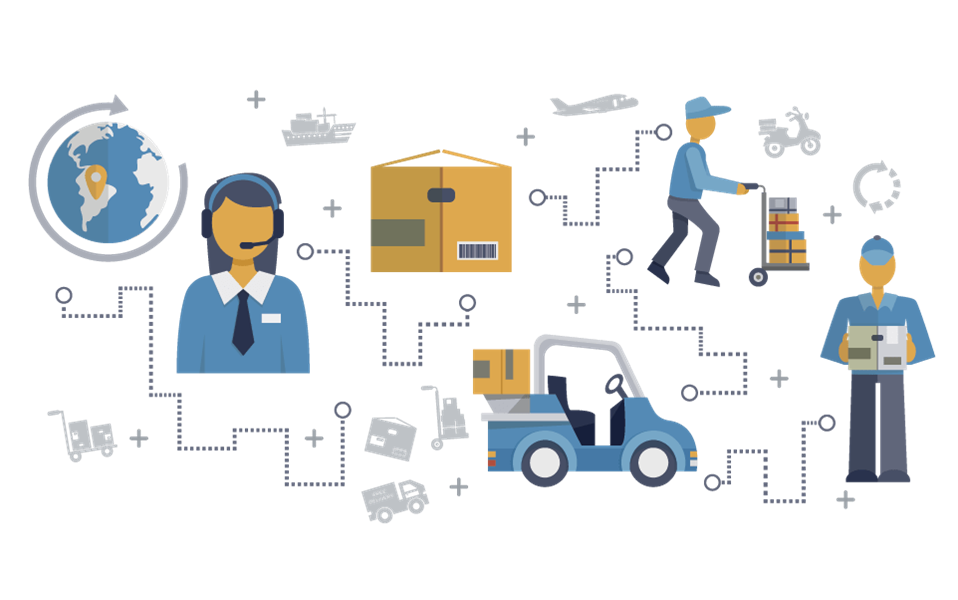Top 5 Global Logistics Challenges
Share

Global logistics are hard to manage due to the lack of transparency in the supply chain. While technology has progressed in recent years, many companies still only receive data about the transport of their goods days or even weeks after their goods were delivered at the final destination.
Just consolidating all this data after the fact is a cumbersome task and resolving any issues within the supply chain and logistics industry is nearly impossible as it’s hard to pinpoint exactly where and when something went wrong.
Below are the top 5 global logistics challenges companies face.
1. Counterfeiting
Counterfeiting can take on different forms. Counterfeiters misappropriate someone else’s brand, falsely label products, or use fake or inferior components to make a product. Lack of consumer confidence in the provenance of goods can really hurt a manufacturer’s ability to sell their products. This is particularly a concern for companies selling their products in Asia, where counterfeiting is widespread and consumer confidence is low.
Counterfeiting is also an issue that is becoming worse each year as ordering goods on the internet is increasingly becoming the new norm. This encourages a lot of counterfeiters to enter the arena and sell fake products, which in turn leads to further decreased consumer confidence.
2. Theft of goods
There are many people handling goods in transit and only one of them needs to have ulterior motives for theft to become a big issue. In the current supply chain, it’s very easy for someone to sign a form saying they’ve handed over 100 boxes, whereas the real amount was only 99 as they kept one themselves.
For manufacturers it is very difficult to figure out where theft may have occurred as information about the shipment of their goods is usually only available days or weeks after (most of) their products have already arrived at their end destination.
3. Lack of accurate data on shipping conditions
Many products need to be transported within pre-set environmental conditions, such as within certain temperature parameters. As there is no way for manufacturers to see shipping conditions in real-time, some logistics companies, local or global, falsify the information on how they’ve shipped certain goods.
A shipping company may turn off the fridge or freezer straight after leaving a port to save costs and turn them back on closer to the end destination. When the conditions are checked at that endpoint, the temperature may well be within the right parameters again but the quality of the products will have been affected already as the temperature parameters were not met throughout the entire journey.
Related: Scott’s Refrigerated Logistics announce Brett Lynch as new CEO
4. Manual processes
A lot of manual processes take place at each handover. Paperwork needs to be filled out and signed or barcodes scanned manually. This information then needs to be fed back to the original manufacturer. Very often this information often doesn’t make its way back to the manufacturer for days or weeks which leads to significant delays and extra hours spent consolidating this data.
5. Lack of shipment updates for end customers
E-commerce is becoming more popular each year due to the increased use of the internet. A lot of the products bought online come from overseas and it can take days if not weeks to arrive. The end customer wants to be updated or be able to track the shipment of their goods themselves, but accurate data is simply not available.















